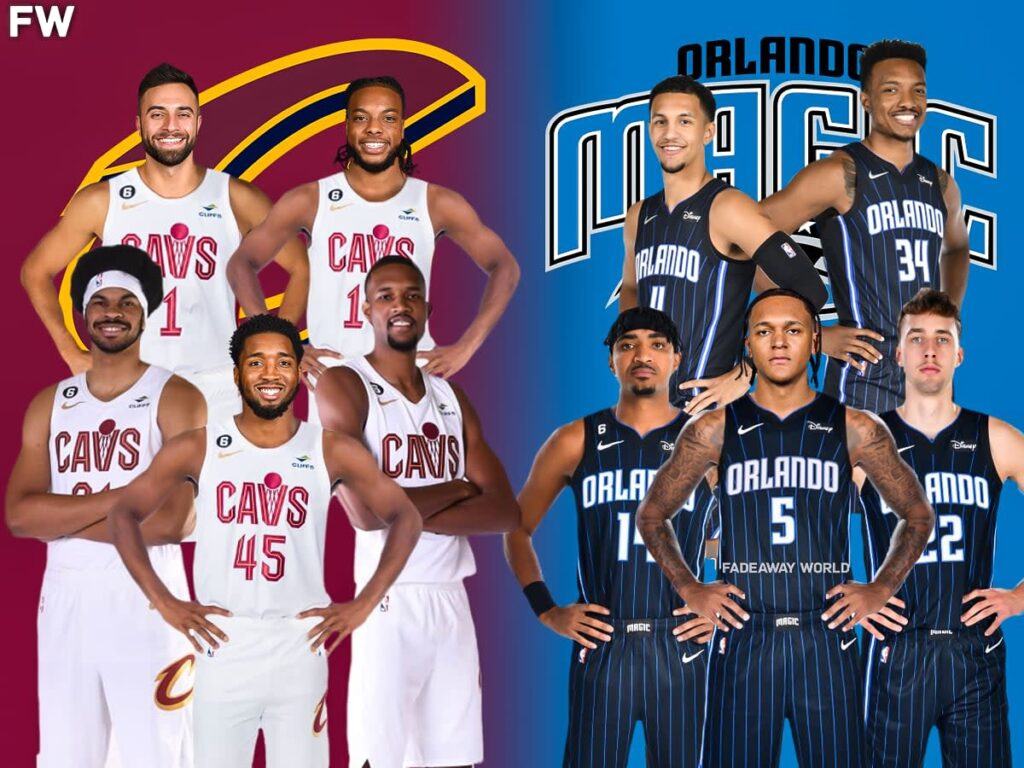When analyzing NBA matchups, it’s essential to dive into the statistics that tell the story beyond just the final score. The Cleveland Cavaliers and Orlando Magic have had several intriguing encounters over the years, each showcasing unique dynamics, player performances, and team strategies. In this article, we’ll explore their head-to-head stats, recent trends, and key player contributions to give you a thorough understanding of how these teams stack up against each other.
Historical Head-to-Head Overview
The Cavaliers and Magic have crossed paths frequently since the 1980s, with matchups that often hinge on pace and defense. Historically:
- Total games played: Over 100
- Cavaliers wins: Approximately 60%
- Magic wins: Approximately 40%
This win percentage gives Cleveland a slight edge, but the contests have often been competitive, especially in the more recent seasons.
Key Statistical Categories Compared
To get a clear picture of how these teams match up, let’s break down important statistical categories based on their latest meetings and overall trends.
1. Scoring Offense
- Cavaliers: Known for a balanced offense, Cleveland averages around 110 points per game.
- Magic: Slightly behind, Orlando scores approximately 104 points per game.
Cleveland tends to push the tempo more aggressively, often utilizing quick ball movement to create open shots. Orlando, meanwhile, relies heavily on fast breaks but sometimes struggles with half-court sets.
2. Rebounding Battle
Rebounding can be a decisive factor in these matchups.
- Cavaliers: Average about 45 rebounds per game, with solid presence both offensively and defensively.
- Magic: Hover around 42 rebounds per game.
While not a huge disparity, Cleveland’s edge on the boards often translates into extra possessions and second-chance points, which can be critical in close games.
3. Turnovers
- Cavaliers: Around 13 turnovers per game.
- Magic: Slightly better ball control, averaging about 11 turnovers.
Orlando’s lower turnover rate reflects their focus on minimizing mistakes, which can keep them competitive even when facing more explosive offenses.
Preavious Article:Discovering Närkes Elektriska Your Trusted Electrical Partner
Standout Players and Their Impact
Both teams feature talented players who make a significant difference in these matchups.
Cleveland Cavaliers
- Darius Garland: The Cavaliers’ lead guard, Garland’s ability to create shots and assist teammates is crucial. He averages about 24 points and 7 assists in games against the Magic.
- Evan Mobley: His versatility in defense and rebounding adds a big presence in the paint. Mobley’s average of 10 rebounds and 2 blocks can shift momentum quickly.
- Jarrett Allen: A reliable rim protector and rebounder, Allen often contests Orlando’s interior scoring.
Orlando Magic
- Paolo Banchero: As the rising star, Banchero brings scoring and versatility. His performances against Cleveland show averages of 20 points and 6 rebounds.
- Franz Wagner: A consistent wing player who adds both scoring and defense, Wagner can disrupt Cleveland’s offensive flow.
- Mo Bamba: His shot-blocking ability is key to Orlando’s defense, often challenging drives to the basket.
Recent Matchup Highlights
In their most recent games, the stats reveal some interesting trends:
- Cleveland has maintained an average field goal percentage of about 48% against Orlando.
- Orlando’s three-point shooting has fluctuated, sometimes making over 35% but struggling below 30% in tighter games.
- Free throw attempts and conversions have been nearly even, showing disciplined play from both sides.
Tactical Insights: What the Stats Tell Us
From the numbers, several tactical points emerge:
- Pace Control: Cleveland often looks to speed up the game, pushing transition opportunities, while Orlando tends to slow things down to execute set plays.
- Defensive Adjustments: Orlando uses their length and shot-blocking to deter Cleveland’s inside scoring, but the Cavs counter with perimeter shooting and pick-and-roll actions.
- Bench Depth: Cleveland’s bench typically contributes more points, giving them a sustained effort when starters rest.
Why These Stats Matter for Fans and Analysts
Understanding these stats helps fans appreciate the nuances of the game and analysts predict outcomes. For example:
- If Orlando can improve their shooting efficiency, especially from beyond the arc, they could flip the historical edge.
- Cleveland’s rebounding advantage means they can capitalize on missed shots, giving them a vital edge in close contests.
- Player matchups, like Garland vs Wagner, often become mini-battles within the game, influencing momentum.
Quick Summary: Cleveland Cavaliers vs Orlando Magic Stats
- Head-to-head record: Cavaliers lead historically.
- Scoring: Cavaliers average more points.
- Rebounds: Cavaliers edge out Magic.
- Turnovers: Magic control the ball better.
- Key players: Garland and Mobley (Cavs), Banchero and Wagner (Magic).
- Style: Cavs play fast-paced offense; Magic focus on defense and controlled offense.
What to Watch in Upcoming Games
- Will Orlando continue to struggle with three-point shooting, or can they improve to challenge Cleveland’s defense?
- Can the Magic’s young core keep pace with Cleveland’s established stars?
- How will coaching strategies adjust based on previous statistical trends?
Final Thoughts
The stats between the Cleveland Cavaliers and Orlando Magic reveal a competitive but slightly tilted rivalry in favor of Cleveland. However, basketball is dynamic—momentum shifts, player development, and coaching adjustments can quickly change the narrative.
For fans looking to dive deeper, tracking these stats throughout the season provides real-time insight into how the teams evolve. Beyond numbers, it’s the intangibles—energy, hustle, and clutch plays—that ultimately decide the outcome.
So next time these teams meet, watch the rebounding battles, ball control, and key player matchups closely. The stats give you the framework, but the thrill of the game lies in how those numbers come alive on the court.

